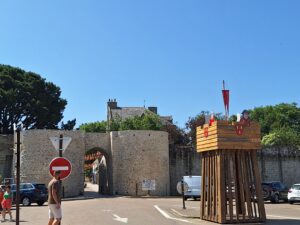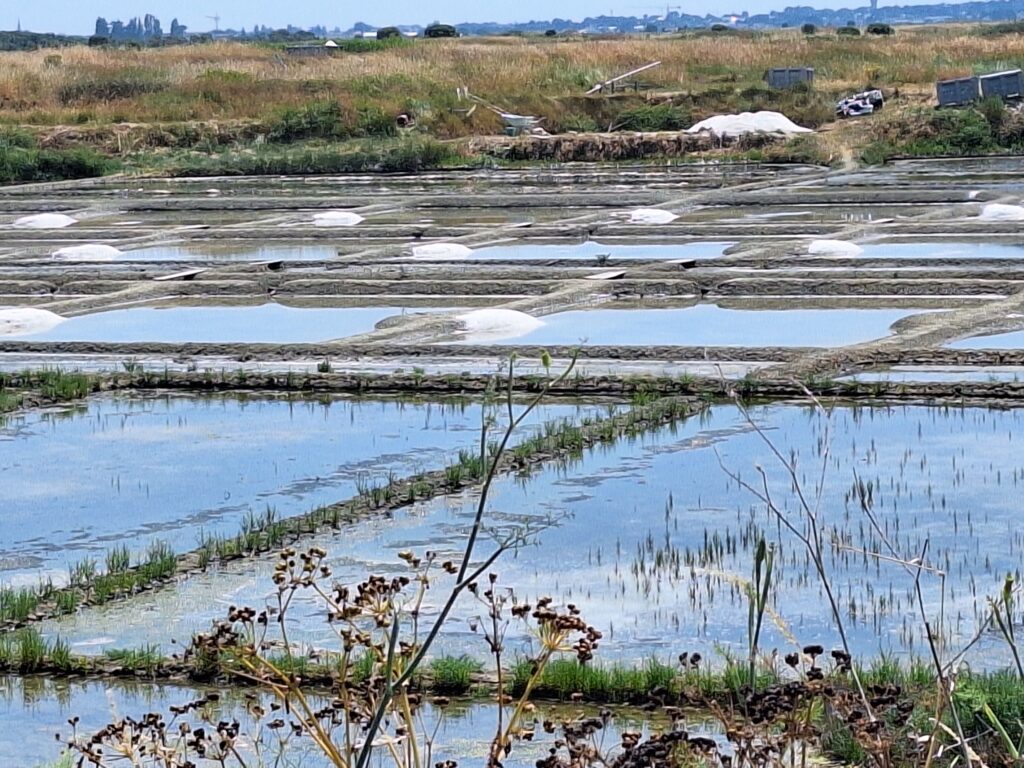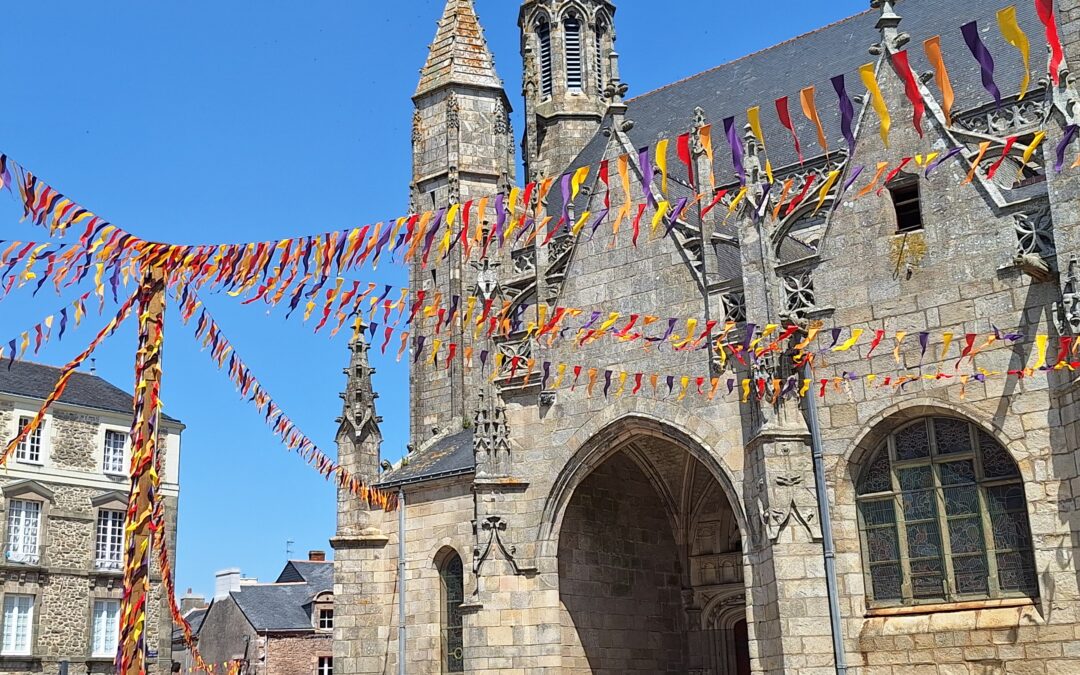Guérande: A Place and a Taste
Guérande is a walled town on the edge of the Grande Brière marsh, west of the city of Nantes. It is on the southeast edge of the Brittany peninsula.
There’s something special about Guérande: Salt. Earlier than the 16th century, people went there to buy salt, though salt has been harvested in this area since Roman times. Today, Sel de Guérande is known and desired around the world as a gourmet salt, used in salted butter and caramel, and sought after by the top restaurants in the country. In the 15th century, it was big business to export salt and wine. The demand was high prior to canning and then refrigeration. After that, the salt trade declined, but in Guérande it was revived, as was the centuries-old profession of salt-gathering. These highly trained people are called paludiers.

There’s more to Guérande than salt, though. The town itself leads you to its medieval past as you stroll along the ramparts and the narrow streets. The historic part of town, the Cité Médiévale, is surrounded by medieval walls and accessible by stone gates. Inside you’ll find Gothic buildings and 16th-century half-timbered homes, as well as plenty of cafés and shops.
You’ll find several parking lots outside the city walls and bike parking lots inside. The Parking due Marché au Bois lot on the east side is right next to the Tourist Office. Stop in for a map with a suggested walking tour. They’ll gladly give you other tips and ideas while you’re there.

There are four gates around the walled town. If you stopped at the Tourist Office, you’re right next to the main one, Porte St. Michel. It’s the largest gate and houses a museum. Stroll the streets and pop in on some boutiques (many of which sell salt, but if you’re planning to visit the flats, they have more options at a lower cost.) Take in a crêperie if you have time for lunch!
Nearby outside the medieval town wall are the salt flats, a unique visit you won’t soon forget. After a short drive of just a few minutes, you’ll find Terre de Sel, a site of salt gathering over nearly 8 square miles. Stretched out on the horizon, you’ll see a grid of 7,000 pools and piles of salt drying the traditional way. Salt dries here for up to two years before it’s sold to the public. When it’s ready to be gathered, the paludier scoops it with a special long-handled tool, called a cimauge, then it’s set out to dry in piles.
Terre de Sel does tours of varied lengths of time and with varied themes, but all of them are outdoors, and all include how the salt flats operate and how salt is formed. There are also special interactive tours for children, family tickets, and hikes through the marshes. And don’t forget the informative and free salt museum there on site, where the process is explained with large colorful posters. If you visit in the cold weather, there’s an indoor version of the outside tour. There is also a shop where you can get different size bags of salt, either coarse gray salt, medium salt, or fleur de sel, the most delicate and tasty kind chefs go after.
There are many independent producers in this area, and together they harvest 10,000 tons of salt per year!

Salt flats of Guerande
Learn more about this exotic type of salt that’s been hand-gathered for centuries. Since the town of Guérande is close to the ocean, you’ll find canals and marshes, a park, and several beaches and resort towns nearby (Le Croisic, La Baule-Escoublac, and La Turballe, to name a few.)
Sel de Guérande was first mentioned in an Oliver’s France post entitled, 7 French Specialties You’ve Never Heard Of.
Another smaller but well-known area for natural salt is La Camargue in the Mediterranean. Check the post, La Camargue: Unique Nature, for more information on this interesting area, which also has a natural preserve covering 360 miles. This area contains hundreds of species of birds, semi-wild horses, and flamingos.
Who knew salt could be so fascinating?






Wow – very interesting. Thanks for sharing France here as I’ll never go. Planes trips are rare for me especially out of the country. But I get to live it through your words and photos!
Thanks, Daphne. I’d love to see you go one day! It’ll open up a new horizon! But thanks, for reading. It’s the next best thing. I love researching posts because I learn so much. I did go to Guerande on my recent trip and it was super-interesting. Take care!